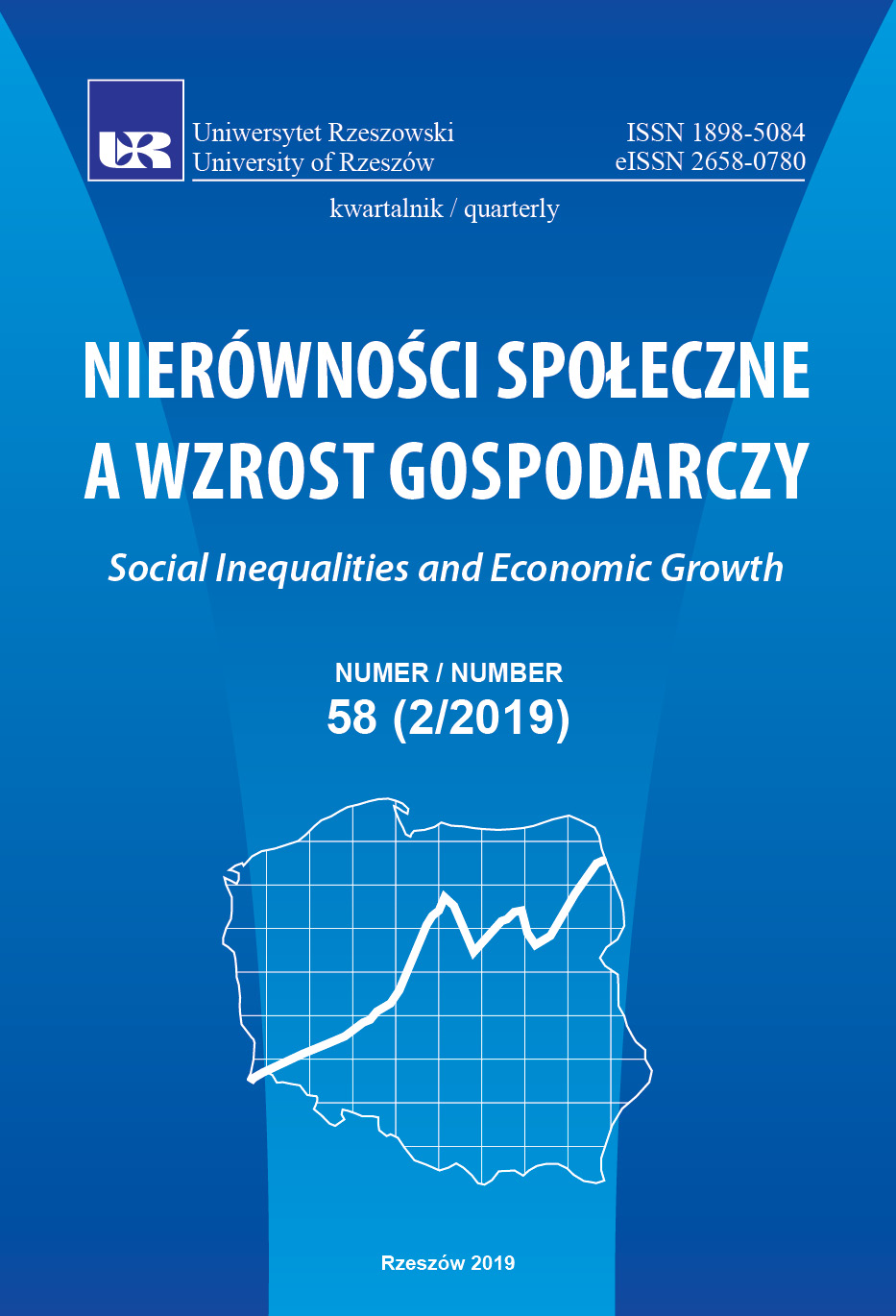Stopień umiejętności korzystania z technologii cyfrowych a wykluczenie społeczne na przykładzie osób niepełnosprawnych, starszych i ubogich
DOI:
https://doi.org/10.15584/nsawg.2019.2.4Słowa kluczowe:
wykluczenie, niepełnosprawność, ubóstwo, starość, InternetAbstrakt
Artykuł stanowi przeglądowy opis badań poświęconych zjawisku tzw. wykluczenia cyfrowego w Polsce, w odniesieniu do osób niepełnosprawnych, starszych oraz ubogich. Na początku opisano, czym jest wykluczenie społeczne oraz wykluczenie cyfrowe oraz udzielono odpowiedzi na pytanie, czy zjawisko wykluczenia cyfrowego jest tożsame ze zjawiskiem wykluczenia społecznego. Następnie omówiono skalę dostępu do technologii cyfrowych w Polsce, a zwłaszcza do Internetu, biorąc pod uwagę przede wszystkim status społeczny użytkowników, ich wykształcenie, wiek, płeć i regiony Polski, które zamieszkują. Kanwę artykułu stanowi przeglądowy opis badań na temat wykluczenia cyfrowego osób niepełnosprawnych, starszych oraz ubogich. Analizy te służą próbie odpowiedzi na pytanie, czy problem ten dotyczy tych trzech grup, a jeśli tak, to w jakiej skali. Aby rzetelnie zdiagnozować omawiane zjawisko przedstawiono także statystki dotyczące liczby osób niepełnosprawnych, starszych i ubogich zamieszkujących w Polsce, zarówno te oficjalne, jak i nieoficjalne. W końcowej części artykułu znajdują się wnioski dotyczące tego, jakie są sposoby zapobiegania i zwalczania wykluczenia cyfrowego oraz, jakie w tym obszarze istnieją inicjatywy społeczne mające motywować osoby wykluczone cyfrowo do wykorzystywania technologii IT w ich codziennym życiu. Podano przykłady kampanii społecznych służących walce z wykluczeniem cyfrowym oraz programów rządowych mających na celu zwiększenie dostępu do Internetu na terenie polskich gmin dla szerokiego grona odbiorców.Downloads
Download data is not yet available.
Pobrania
Opublikowane
2020-11-13
Jak cytować
Garwol, K. (2020). Stopień umiejętności korzystania z technologii cyfrowych a wykluczenie społeczne na przykładzie osób niepełnosprawnych, starszych i ubogich. Nierówności Społeczne a Wzrost Gospodarczy, 2(58), 47–68. https://doi.org/10.15584/nsawg.2019.2.4
Numer
Dział
Artykuły
Licencja
Prawa autorskie (c) 2019 Uniwersytet Rzeszowski

Utwór dostępny jest na licencji Creative Commons Uznanie autorstwa – Na tych samych warunkach 4.0 Miedzynarodowe.


